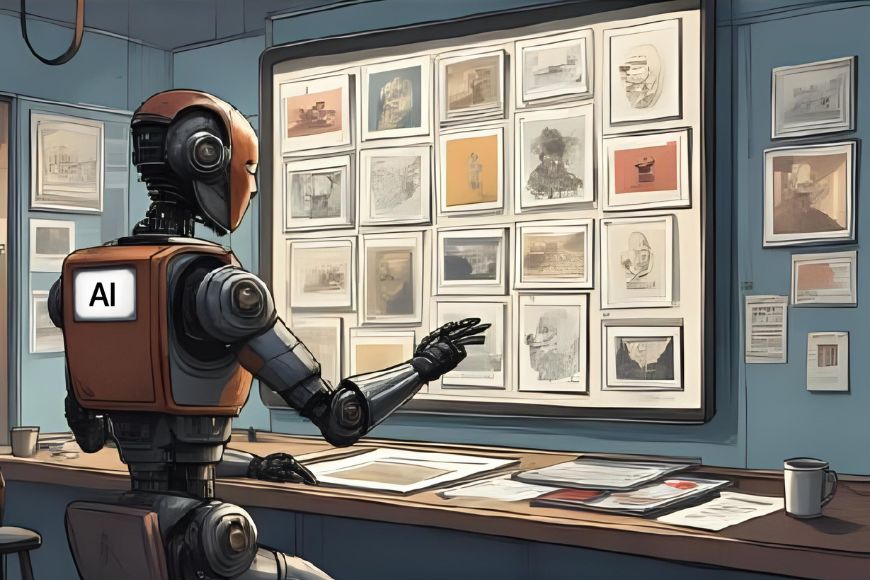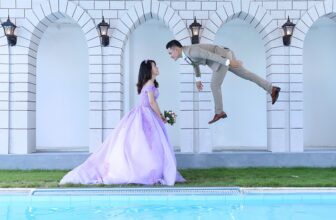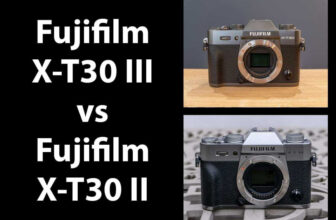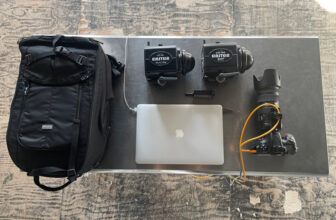
AI technologies have revolutionized the photographic world.
In this article, I want to explore how they’ve impacted the field of photo curation.
I’ll examine how AI assists in various stages of photo curation and highlight some popular software and services used for each task.
I’ll also discuss how AI photo curation can impact different fields, from the professional world to amateur and personal photography. One section will be dedicated specifically to its role in the arts.
Finally, I’ll reflect on the risks and limitations of using AI for curating photographs from a legal and ethical standpoint.
If you’re curious about this topic, dive with me into the complex yet exciting world of AI photo curation.
AI in Photo Curation
If you’ve ever dealt with an extensive collection of photos, you know the pain of culling, selecting, tagging, and organizing them. It can be an overwhelming task that can kill your storytelling creativity.
When I talk about AI photo curation, I include the culling process, which deals with technical aspects like discarding duplicates or eliminating blurry images.
However, I also go beyond it and focus on the selection of images based on other criteria, such as storytelling, emotional impact, content, aesthetics, etc.
The first thing that comes to mind when we talk about photo curation is art exhibitions. But it also extends to other photographic genres and even personal libraries—anywhere you need a curated selection of images.
In this section, I’ll explore the wide range of applications and the AI tools designed to support each field. So, let’s get started.
AI Tools for Photo Curation and Management
In this section, we’ll cover the different levels of AI involvement in the photo curation process. In each one, I’ll give some popular examples, but this is by no means an exhaustive list.
AI Automated Selection
These AI tools are more for culling than curating, as they primarily focus on the technical aspects of the image. However, as they do a selection from any album or collection, I’m including them anyway. They also discard or separate duplicates.
Aftershoot – this photo management software has an AI-automated culling that “analyzes and selects the best photos for you to review.” It will learn your culling preferences as you use it, so the curation becomes increasingly fitting to your criteria.
FilterPixel – As you import your photos into FilterPixel, they get a first scan where photos with major issues are marked as Rejects. Then, you can further cull your images by clicking “Auto Select” or manually select the photos you want to keep. The model is trained to recognize an artistic blur or an intentional motion blur so that it’s not rejected.
Google Photos – Google Photos has a feature called auto-generated albums. It organizes your images based on the people present, using face recognition, events, or location.
AI-Assisted Curation


Google Photos – Beyond its automatic features, Google Photos now includes an AI-assisted tool called Ask Google. This feature lets users interact with a chatbot to generate and refine photo selections based on their chosen criteria.
Apple Photos – Using Apple Intelligence, you can find any photo or something within a video just by describing it. If the same topic is present in more than one photo or video, you’ll get an AI-assisted photo selection.
Aftershoot – While Aftershoot features a fully automated culling tool, it also offers an AI-assisted option, allowing you to select photos using “Key Faces, Duplicate Grouping, and Image Scores.”
Sensei (Lightroom), Luminar Neo, and Excire – The smart search tools integrated into these platforms analyze image content, use face detection technology, and use predetermined filters. All these tools help the user cull extensive collections and curate albums faster and more efficiently.
Advanced Curation and Storytelling


Apple Photos – AI Intelligence is also helpful if you want to create a narrative using your photos. Simply describe whatever you have in mind, and Apple Photos will curate the images and videos that best match your idea. Then, it will craft a storyline with chapters and a narrative arc, add music to it, and create a movie.
Photobook.ai – This mobile and web-based app is trained to build the best photo books. Because of this, it can create stories with micro-stories inside them.
Their model is also proudly called a ‘decrapperizer’ because it’s trained to ignore all the ‘crap we shoot’ on a daily basis when creating your stories. Of course, it also selects images based on their technical characteristics to avoid blurry or overexposed photos.
The selection and organization of the images is entirely automated. Of course, you can modify things to your liking if you’re not satisfied.
MediaViz AI – this tool is trained to evaluate photos like a human. The idea is that it doesn’t categorize images based on pre-determined factors. Instead, it finds patterns to determine what makes the photo meaningful.
This advanced technology enables it to dynamically adapt, making it especially useful in photo curation. MediaViz is designed for high-volume collections and it can analyze up to 60,000 images per hour. It also supports videos.
Tools developed by artists, institutions and research labs – While there are some commercial AI models designed for advanced curating and storytelling, there are some unique ones developed for art and research.
One example is the work developed by Refik Anadol for his project Renaissance Dreams. He trained the AI with text and images from the Italian Renaissance period.
Then, the GAN algorithms identify similarities within the collection and present the artworks in a new and dynamic way that resembles a dream. To learn more, you can visit the MEET website or visit the site-specific installation in Milan to see the artwork, as it became part of its permanent collection.
AI in Consumer and Professional Workflows


While AI helps in culling large collections, AI photo curation at various levels can be applied across different photographic fields. Here are a few examples to illustrate its potential.
Event Photography and Media
Event photography is one of the fields where culling is highly time-consuming. After one event, a photographer can come back with more than a thousand images. If the event coverage is aimed at the media, there’s also a time-pressing factor.
In this matter, AI photo curation can be extremely helpful. AI can recognize logos and create individual albums for each of the event’s sponsors.
In private events such as weddings, AI face recognition can also help you make personalized albums.
Additionally, the AI can recognize locations or lighting conditions that help you organize images for longer events, such as those that took place in different venues or lasted the entire day.
Journalism and Editorial Use
Photography for journalism and editorial use is time-sensitive. AI photo curation can help professionals cull images faster.
Using AI-assisted tools, it can also create selections based on emotional impact, rate images for newsworthiness, identify peak action, and more.
Moreover, more advanced AI photo curation tools can help build a cohesive narrative based on the editorial goals. If a photographer works for different media, they can also make tailored content albums.
Marketing
To create more successful marketing campaigns, you can use AI photo curation tools to create albums for different target audiences and media supports. You can do this by analyzing aesthetics, emotional tone, etc.
For e-commerce, you can also use AI photo curation to streamline the selection of angles, lighting, platform requirements and other factors. Some platforms can even evaluate photos based on conversion performance data.
Another common use for AI photo curation in marketing is to streamline the selection of images for A/B testing.
Using these tools, marketers can organize visually distinct images to test their performance. The organization can be based on composition, color palette, emotional impact, and other factors.
Archives and Photo Libraries
The role of archives and photo libraries extends beyond preservation. The collections should be searchable and usable both by the staff and the general public.
AI-assisted photo curation can make this possible by creating interactive albums that allow people to browse through the collection in customized ways.
Another task of these institutions is to promote the visibility of the heritage they safeguard. Using AI photo curation, they can organize exhibitions and publications that help them fulfil this mission.
Organizing Your Personal Photos
Thanks to digital photography and, especially, the widespread availability of smartphones, each of us generates thousands of images that end up in the cloud or on a hard drive, never to be seen again.
Using AI photo curation tools, it’s easy to organize personal photo libraries based on events such as birthdays, travels (based on locations and date stamps), themes using storytelling tools, or people thanks to face recognition.
This makes it easier for you to browse your memories.
AI Photo Curation in the Art World


While artists have pioneered the experimentation of AI tools, art institutions and curators are still hesitant. For this reason, there aren’t many examples of AI photo curation in the art world.
However, there are a few significant examples that we can go through that show how exciting this field can be.
Act As If You Are a Curator: An AI-Generated Exhibition
Duke University, 2023 – 2024
This project is a landmark and the most popular example of AI used in art exhibition curation. To make the exhibition, the museum staff collaborated with the university’s faculty and students to train a ChatGPT interface from the model v.3.5.
This was fed with public information, sourced from 14,000 pieces in the museum’s collection. Crafting specifically engineered prompts, ChatGPT created an exhibition titled Dreams of Tomorrow: Utopian and Dystopian Visions.
After narrowing down the recurring topics that ChatGPT suggested, the team asked it to select the works, write an introductory text, and plan the layout in the gallery.
You can find more information and photo documentation of the exhibition on the Nasher Museum website.
New Directions May Emerge
Helsinki Art Museum for the Helsinki Biennial 2023
In the context of the Helsinki Biennial 2023, the HAM created a web-based installation where AI was both the curator and co-creator.
The team fed the AI artworks from the HAM museum. Then, they trained the AI to ‘understand’ the meaning and style of the artworks so that it would place them in different spots around the city.
As a result, there was an alternative version of the city with artistic installations that could only be explored online.
The idea was to generate an interactive virtual experience that blended the collection with imagined geography, blurring the line between curation and perception.
You can learn about the methods, evaluation process, and results in the paper AI Art Curation: Re-imagining the city of Helsinki in occasion of its Biennial, published on Artvix.
This Show is Curated by a Machine
Museum of Wild and New and Newfangled Art, 2021
The mowna team showed an artificial intelligence tool the artworks from the Museum of Modern Art, the Art Institute of Chicago, and the mowna 2021 Biennial, among others.
Then, the AI curated the exhibition “This Show is Curated by a Machine” in direct response to the Whitney Museum’s curatorial guideline, “The Next Biennial Should Be Curated By a Machine.”
The exhibition of mowna includes a human curation for comparison. Since it’s an online exhibition, you can still see it by buying a ticket for the amount you consider appropriate.
You’ll also find a blog with thoughts and considerations about the process and the results.
Risks and Limitations


Using AI in your photographic workflow often involves ethical, legal and practical challenges. Here are some of the most common ones you’ll face while using AI photo curation tools.
Bias and ethics – AI tools often perpetuate stereotypes and biases based on the training data. This poses a complex ethical issue, especially in fields like journalism and media, where images help shape public opinion.
Privacy – Privacy can be an issue with many AI platforms. It’s important to review all the terms and conditions to understand how they use your data, including whether it’s used for training the AI, etc. This is especially sensitive when there’s face recognition involved, but also regarding ownership, copyright, etc.
Lack of human touch – Using AI in photo curation can limit the creative eye and sensitivity that humans usually bring to the table. A person can curate a collection with the assistance of AI, but it comes with the risk of overlooking nuances or missing key images during the initial large-scale culling.
Additionally, the use of AI may end up prioritizing the technical over the emotional impact or standardizing what is considered ‘good’ or ‘bad’, thereby disregarding the creative decisions and unique style of the authors.
You can go deeper into the ethical considerations of AI in this piece.
Credit : Source Post






